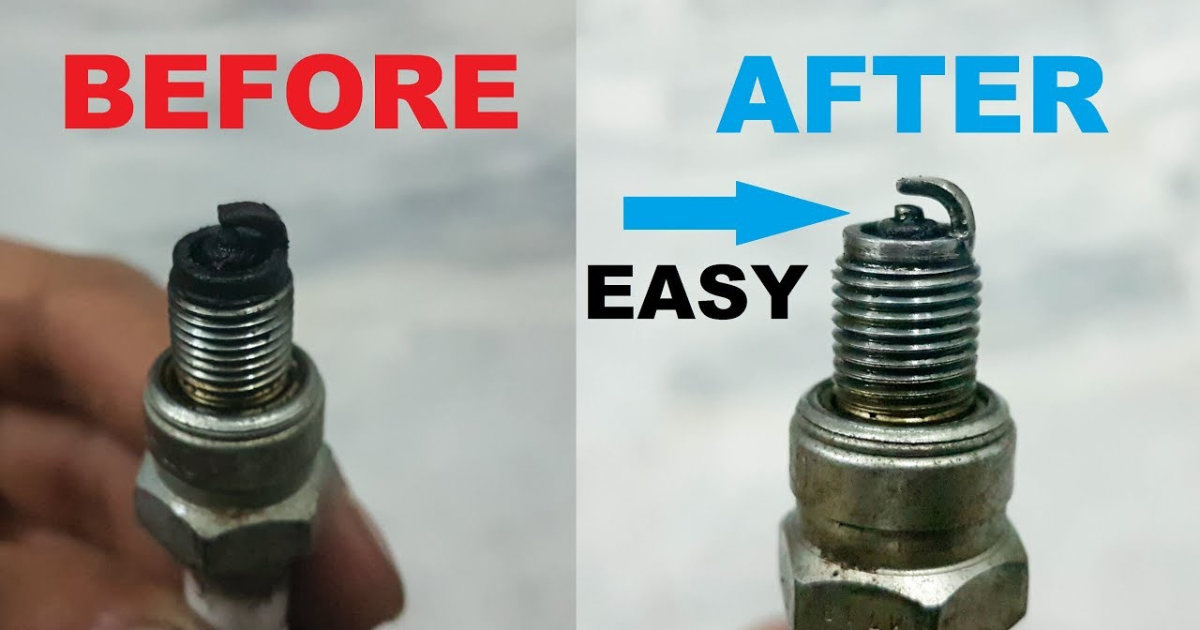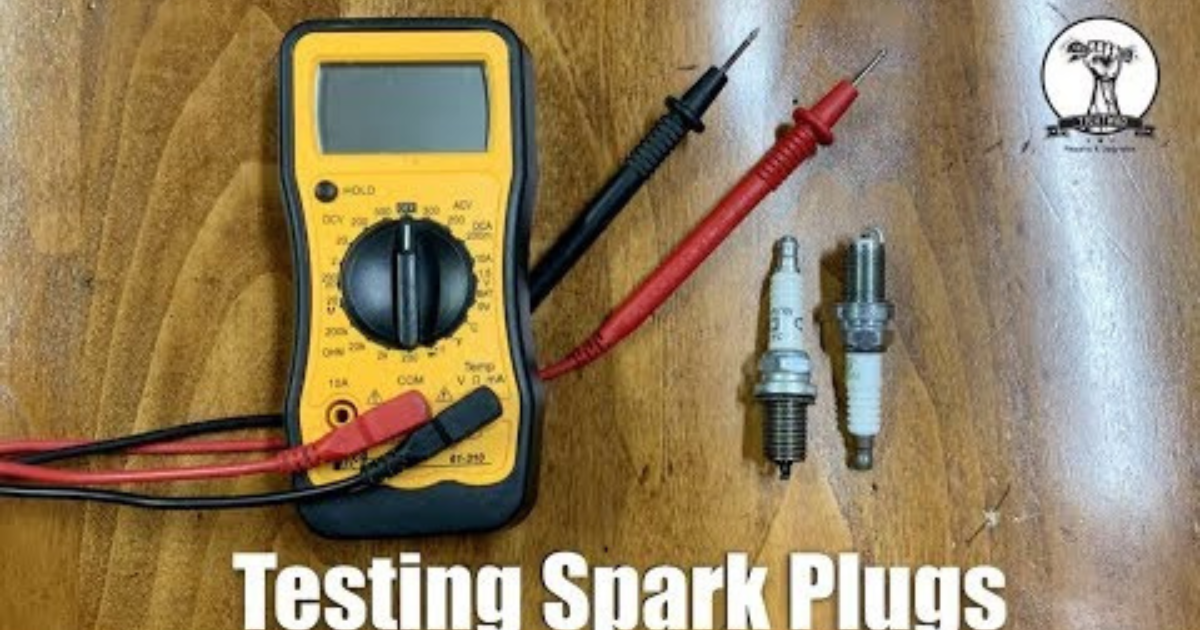In gasoline engines, spark plugs are a crucial part that keeps the engine running properly. Therefore, for the best functioning, it is essential to clean the plugs regularly. Cleaning them regularly will keep them in good functioning order and prevent the need for replacements.
How To Clean Spark Plugs
The mechanical job of cleaning spark plugs is beyond the capabilities of any do-it-yourselfer or entry-level mechanic. Regardless, there are a number of ways to clean spark plugs.
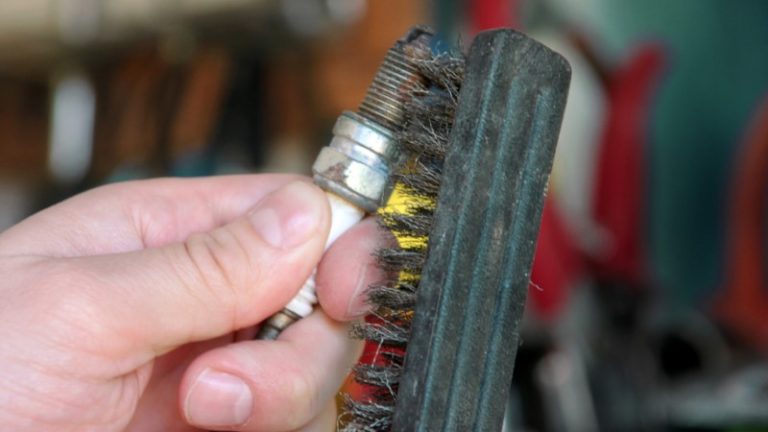
You can’t clean spark plugs without removing them, therefore that’s the first step when you want to clean them. To reach the plugs, you must first remove them. Then, decide which approach you choose to employ.
Method 1: Cleaning With Abrasive
Clean the electrodes with 220-grit sandpaper:
A spark plug, which is the component that is inserted into the engine, always has a little pole protruding from its tip. An electrode describes it. If it’s discolored or has carbon deposits, gently rub it with sandpaper until no trace of carbon remains.
Clean the carbon deposits with a file:
If the deposits are really difficult to remove with sandpaper, you may want to try using a file. Slide the file back and forth across the space between the plug body and electrode.
Clean the threads with a wire brush:
It is possible that the threads of the plug are covered with oils and filth. You can tell there’s oil in the spark plug holes if they’re oily. Before replacing the spark plugs, make sure the holes are clean. To quickly remove deposits and debris from the thread, brush the plugs at a perpendicular angle. After that, switch up the direction you’re brushing the plugs in.
Clean with carb cleaner:
You may find carb cleaners at local auto parts stores as well as on websites like Amazon, eBay, and Walmart.
How does one go about using a car cleaner to clean spark plugs? This is a common question among novice mechanics. Several automotive components can be efficiently cleaned with carb cleaners, which remove carbon deposits, buildup, grime, and debris.
Spray carb cleaner onto the spark plug while it is resting on a clean surface, such as a vice. Use a clean cloth to wipe it down after spraying the cleanser. Along with cleaning, it dries fast and produces spark plugs that are free of debris.
Utilize a wire brush in conjunction with carb cleaner in the event that the carbon deposits remain intractable. After that, dry off the plug by wiping it with a clean cloth or rag to remove any carb cleaner residue.
Method 2: Using Blow Torch
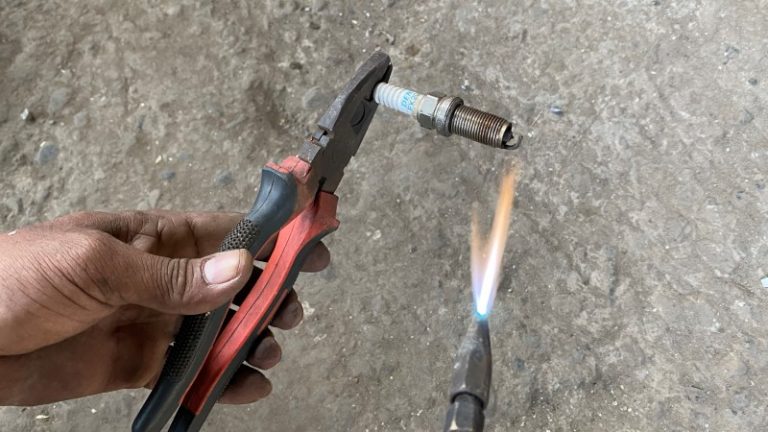
The spark plugs can be heated to severe temperatures using a blow torch. So, to avoid burning your hand, you’ll need to use pliers to lengthen the plugs.
With the pliers gripped onto the part that connects to the ignition coil, hold the plugs. To keep the plug in place and prevent damage, hold it firmly without compressing it. The plier’s sole purpose is to provide more reach. Instead of using pliers, you should use a bench vice.
After you’ve turned on the gas or propane touch knob, either put the ignition source in front of the nozzle or press the ignition button to start the process. It will be kept burning after this. Increase the torch’s intensity until it begins to produce blue flames.
The spark plugs will be cleaned of any debris, oil, and rubbish with just a touch. Don’t worry about burning the plugs; they’ll be fine in this hot environment. When the spark plug’s electrode and tip begin to light red, continue to rotate the plug while burning it.
Be very focused and avoid burning anything other than the threaded part of the plugs with the torch. Depending on the torch you’re using and its heat setting, the burning procedure could take a few minutes.
Put the spark plugs in a cooling tray and handle them with care. Before utilizing the plugs, make sure they are cool. Use caution when working with a blow torch and spark plugs; the plugs will revert to their original color before the torch cools. Before attempting to reinstall any plug, wait 5 minutes to ensure that your hand is not burned.
Recall that I specifically requested that you clean the spark plugs at the same time. Reinstall the spark plug and secure the ignition coils or high tension wire once it has cooled. Then, proceed to the next spark plug. Once you’ve cleaned all of them, stop. Cleaning one area at a time is not acceptable.
Method 3: Using Spark Plug Cleaner Tool
Using a spark plug cleaning machine is another tried-and-true way to clean spark plugs. The cleaner tool is specifically engineered to sandblast the spark plugs while drawing in air. This instrument is really useful.
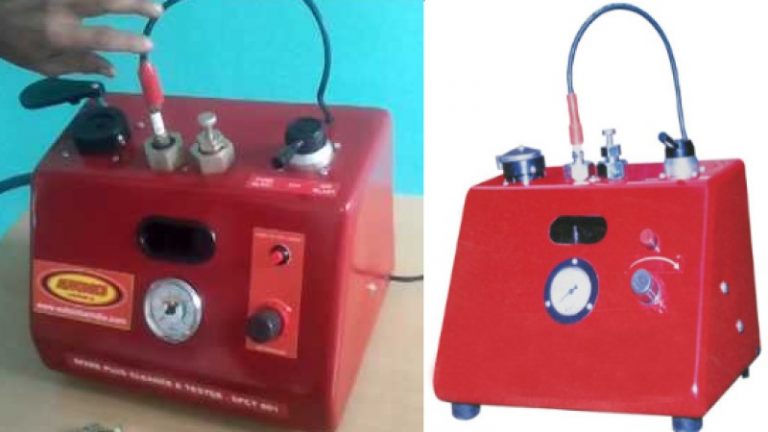
Connect the air supply, repair the airbag, and tighten the clip to utilize this tool. To begin sandblasting, press the machine’s button, insert the spark plug, and turn the machine on. To remove any carbon buildup, shake the plug continuously while using the cleaning tool. After you finish blasting, turn the machine on air and remove any debris from the plug.
It is nevertheless recommended that you use an air supply to blow out the spark plugs. No foreign object should be allowed to fall into your cylinders.
Reinstalling The Spark Plugs
To find out what the recommended gap measurement is, look in your owner’s manual or on the manufacturer’s website. After you obtain the measurement, place a spark plug gap tool on the space between the protruding electrode and the spark plug body.
Get the precise measurement by measuring the aperture and then deciding whether to pry the body away from the electrode or tap it closer to the electrode to raise or decrease the gap.
Put the spark plug in and hand-tighten it. To keep the plugs from being cross-threaded, this is crucial. Spark plug threads can be worn out by threading the plug with a socket handle. As a result, you should hand-tighten it before using a plug socket to torque it.
When turning the plug by hand becomes impossible, attach the socket wrench and apply torque. Having said that, you should not exert excessive force. If you use too much, the cylinder head plug could shatter. The head cylinder must be dropped in such a case, which results in.
After this, what comes next? You need to reconnect the spark plug wire or ignition coil. Connect the wire to the plugs while holding the boot tightly. A click will be heard when the wire is securely attached to the plug.
The absence of a click is an indication that the plug wire was not securely fastened and could potentially come loose while driving. Therefore, if the wire is not sitting correctly, you can twist it left and right before reinserting it.
Conclusion
If you notice oil on the spark plug wires when you’re cleaning or replacing old spark plugs, it’s important to clean the spark plug holes for optimal performance.
If you’re cleaning or replacing an old spark plug because of a faulty spark plug, you should also check the spark plug cables. In the event that you are unable to identify the offending cable, a replacement will yield no improvement until you identify and replace the faulty cable.
So far, you should have all the knowledge you need to clean spark plugs from this post. Everyone can do it since it is easy, quick, and accessible.

